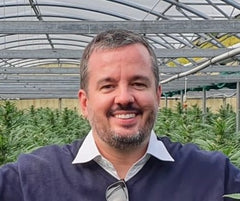Cannabigerol (CBG) is quickly becoming recognized as one of the most talked-about cannabinoids in today’s hemp and cannabis market. As interest grows, so does curiosity about how CBG oil is extracted, with much attention placed on the methods and steps that make this process possible.
Key Takeaways
- CBG, sometimes called the “Mother of all Cannabinoids,” is the non-acidic form of cannabigerolic acid (CBGA), which serves as the starting point for other cannabinoids.
- The best time to harvest plants for higher CBG content is usually around six weeks into the eight-week flowering cycle of young cannabis plants.
- CO2 and ethanol are the main solvents used for CBG extraction. CO2 is often preferred for its efficiency and the quality of the final extract.
- The extraction process generally includes chilling, extraction, filtration, solvent removal, decarboxylation, distillation, and chromatography.
The CBG Extraction Process

- Harvesting: Young cannabis plants are collected since they contain more CBG than fully mature plants.
- Drying: The plants are dried to reduce excess moisture.
- Grinding: Once dry, the material is ground into a fine powder.
- Extraction: The powder undergoes solvent extraction using either CO2 or ethanol.
- Purification: The extracted oil is refined to remove unwanted elements.
- Concentration: The oil is then concentrated to enhance its strength.
- Testing: The final extract is tested to verify quality and safety standards.
CO2 vs. Ethanol Extraction
CO2 extraction is widely considered the most effective way to produce CBG oil, as it results in a clean, high-quality extract with very little solvent residue. Ethanol extraction, while still common, can sometimes yield less refined results with higher levels of leftover solvents.
Challenges in CBG Production
Producing CBG remains expensive because it is naturally present in small amounts in most cannabis strains, and harvest timing must be precise to capture higher concentrations. Plant breeders are actively developing varieties with higher CBG content to make the process more practical and cost-effective.
Conclusion
As the cannabis and hemp industries move forward, CBG oil is gaining attention for its unique role among cannabinoids. While its extraction process is detailed and requires careful handling, the results highlight the growing significance of this compound within the wider field of cannabinoid research and product development.


